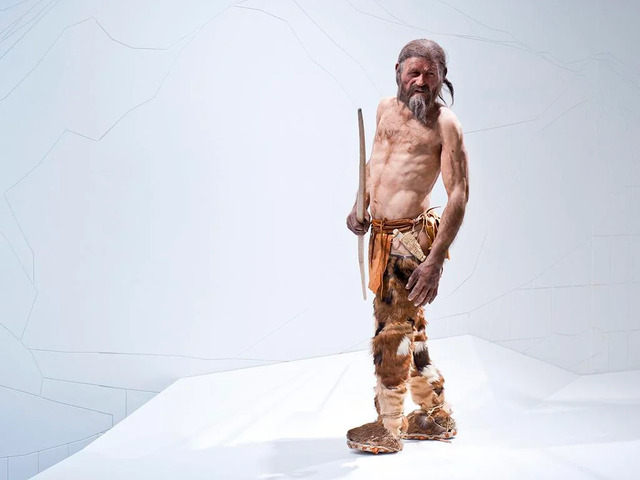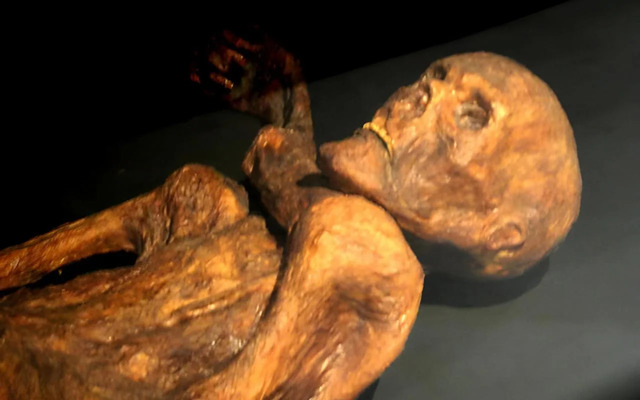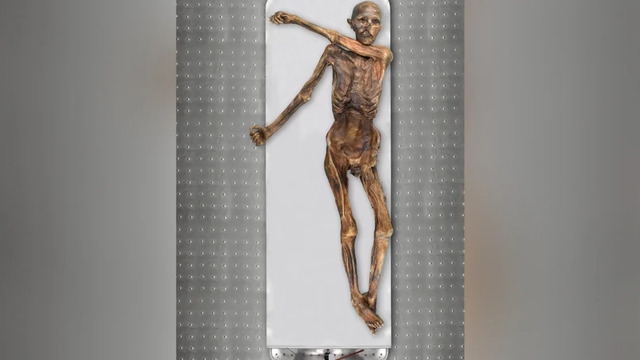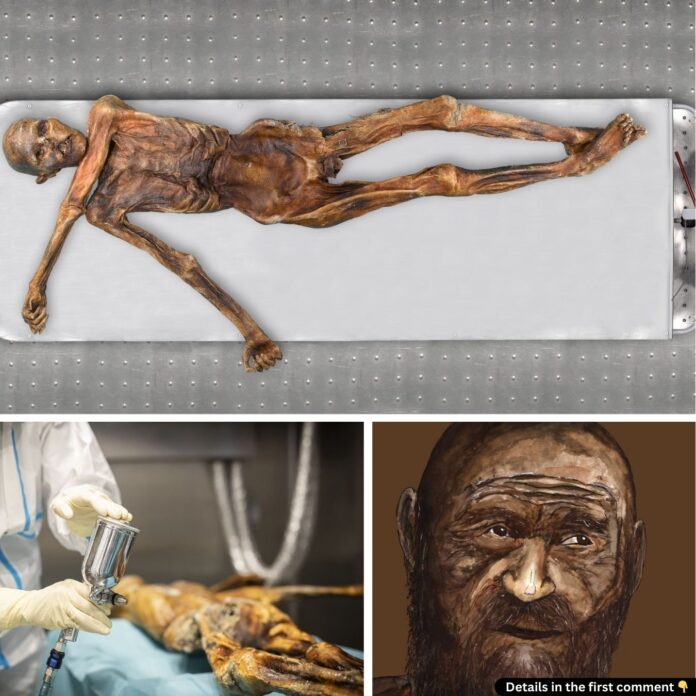Discovered in 1991 by hikers in the Ötztal Alps, Ötzi the Iceman has captured global fascination as one of archaeology’s most intriguing finds. Preserved by ice for over 5,300 years, his remains offer a window into the life, death, and genetics of early Europeans. Recent DNA analysis has revealed groundbreaking insights into Ötzi’s appearance, ancestry, and the circumstances of his life, challenging long-held assumptions and providing a more nuanced understanding of his era.
The Discovery of Ötzi and His Significance
Ötzi’s mummified body was found in a rocky gully at an elevation of over 10,000 feet, perfectly preserved by ice. Radiocarbon dating identified his death around 3,300 BCE, making him one of the oldest and best-preserved human mummies ever found. Nicknamed after the Ötztal Alps, Ötzi became an archaeological treasure, sparking interest in his diet, health, tools, and the enigmatic circumstances of his death.

Beyond the mystery of his demise, Ötzi represents a wealth of information about early European societies. His belongings, including a copper axe, flint knife, and animal-skin garments, offer rare insights into the technologies and lifestyles of the time. Over the decades, scientific studies have continuously rewritten his story, with each discovery bringing us closer to understanding his life.
Video
Uncover the mystery of Ötzi the Iceman in this full documentary – watch as NOVA delves into the 5,000-year-old true crime of his murder in the Alps!
New Insights from Advanced DNA Analysis
In a recent study published in Cell Genomics, researchers employed cutting-edge DNA sequencing techniques to analyze Ötzi’s genome, yielding remarkable revelations about his physical traits and ancestry.
Appearance: Shattering Old Assumptions

For years, artistic reconstructions depicted Ötzi as a fair-skinned, bearded man with a full head of hair. However, the latest analysis paints a very different picture. Ötzi likely had dark skin, dark eyes, and male-pattern baldness. These traits challenge previous reconstructions, which were influenced by modern biases about Stone Age Europeans. The findings suggest that early European farmers, like Ötzi, had darker skin pigmentation due to their diet and environment.
Genetic Ancestry: A Surprising Lineage

Over 90% of Ötzi’s genetic heritage traces back to early Anatolian farmers who migrated from present-day Turkey around 8,000 years ago. This makes Ötzi an outlier among his contemporaries, who typically exhibited a mix of farmer and hunter-gatherer ancestry. Researchers believe that Ötzi’s community lived in relative isolation, limiting genetic exchange with other populations.
The study also corrected a previous assumption about steppe ancestry in Ötzi’s genome. Earlier findings, influenced by contamination, suggested a connection to Yamnaya steppe herders. However, the new analysis ruled out this link, providing a clearer picture of his genetic background.
Reconstructing Ötzi’s Life and Death
Ötzi’s remains offer an intimate glimpse into his final days and the challenges he faced.

Stomach content analysis revealed that Ötzi’s last meal included ibex and deer meat, highlighting his reliance on hunting despite his agricultural ancestry. His tools and clothing—crafted from various animal hides—suggest a resourceful individual well-adapted to his Alpine environment. Researchers also discovered traces of pollen, indicating that he likely traversed different altitudes shortly before his death.
Ötzi’s death remains one of archaeology’s most debated mysteries. Initially believed to have succumbed to freezing temperatures, a 2001 X-ray revealed a flint arrowhead lodged in his shoulder. The injury would have been fatal, indicating he was likely murdered. A head wound and a defensive injury on his hand suggest he may have been ambushed or involved in a violent conflict. Why he was in the mountains remains uncertain, but theories range from fleeing enemies to performing a ritual.
Ötzi’s Contributions to Modern Science
The Iceman has become a cornerstone of ancient DNA research, enabling scientists to explore early human genetics, health, and migration.

Through Ötzi, researchers have traced the evolution of traits like pigmentation, dietary adaptation, and disease susceptibility. For instance, genetic markers linked to male-pattern baldness and diabetes were identified, highlighting how these conditions have long been part of human history.
The latest study exemplifies the power of advanced sequencing technologies. The high-coverage genome obtained from Ötzi’s pelvis provided more accurate results than earlier analyses, paving the way for future discoveries. Researchers are now exploring his microbiome to learn more about ancient pathogens and gut health.
A Living Legacy
Despite being over five millennia old, Ötzi continues to evolve in our understanding. His story reflects the importance of revisiting historical assumptions with modern tools, ensuring a more accurate representation of the past. From his diet to his violent death, every aspect of Ötzi’s life provides valuable insights into the complexities of early human societies.
As scientific techniques advance, Ötzi remains a “gift that keeps on giving,” offering lessons not just about his era but also about the nature of human inquiry. Through him, we are reminded of the enduring connections between past and present, as well as the evolving nature of our understanding of history.
